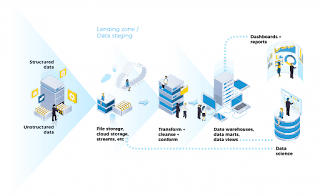Exploring the Backbone of Data: A Comprehensive Guide to 5 Popular Databases Shaping the Digital Landscape
Navigating Data Basics: Your Easy Guide to 5 Common Databases Shaping
In today's digital world, information is super important for making smart decisions in businesses. Think of databases as the heroes behind the scenes that organize, manage, and find data when we need it. Let's dive into five types of databases that do this job and are shaping the digital world.
1. Relational Databases:
What they do: These databases organize information in neat tables using a language called SQL.
Examples:MySQL, PostgreSQL, Oracle.
When to use them: Great for apps with lots of connected data, like finance tools or customer systems.
2. NoSQL Databases:
What they do: NoSQL databases handle all kinds of data, even messy or not-so-organized ones. They're flexible and can grow easily.
Examples: MongoDB, Cassandra, Redis.
When to use them: Best for big, real-time apps, like social media, IoT, or content systems.
3.Graph Databases:
What they do:These databases use cool graphs to show relationships between data, perfect for things like finding patterns.
Examples: Neo4j, Amazon Neptune.
When to use them: Super useful for spotting connections in data, like in fraud detection or social networks.
4. Columnar Databases:
What they do:Instead of organizing data in rows, they use columns, making it easier to quickly find and analyze big amounts of data.
Examples: Apache Cassandra, Google Bigtable.
When to use them: Great for digging into data for things like reports and big analyses.
5.Time-Series Databases:
What they do:These databases are like timekeepers, perfect for keeping track of data as it changes over time.
Examples: InfluxDB, Prometheus.
When to use them:Handy for things that need time-stamps, like monitoring systems, IoT gadgets, or financial reports.
Understanding databases is like knowing the backstage crew of a show – they make everything run smoothly. Choosing the right database depends on what you need, like how your data looks, how it's connected, and how much of it you have. By picking the right one from relational, NoSQL, graph, columnar, or time-series databases, you're setting up a strong foundation for your data, and that's a big win for your digital journey!


Comments
Post a Comment